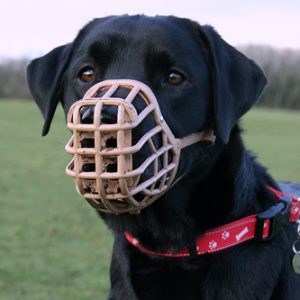
Your neighbour may blame you for your dog’s aggressive behavior, but even people who understand dogs and raise them kindly can have a dog who behaves aggressively. Other people may be the ultimate “alpha” and yet end up with an aggressive dog. And some dogs who were abused never become aggressive. Some dogs will even behave more or less normally until the dog matures socially around 2 or 3 years of age. So what are the causes of dog aggression?
What we do to make dog aggression worse
Much of the time people simply have not be taught how to treat dogs (for example, many dogs do not like being hugged) or how to recognize the early warning signs, such as staring, stiffening, licking of the lips when the dog is not hungry, or yawning when the dog is not tired. When the signs are not recognized the aggression appears sudden when in fact, the dog is not suddenly aggressive at all. They have been giving us warning signs and we have been missing them.
The issue: Most canine behavioral problems either involve normal behaviors that people don’t like or understand or anxiety-related concerns that comprise true behavioral diagnoses. – Dr. Karen Overall,
Dumbed down by dominance, 2012
In many cases the dog has an underlying condition – often one of anxiety – that can attract the kind of responses from humans that make the situation worse. Either we become frustrated or we take on bad advice such as intimidating the dog as a way to try to deal with it. Unfortunately outdated methods that have been popularized by the media can make dogs who are predisposed to aggression
worse (see the
world’s worse dog aggression advice). Your dog’s behaviour may attract negative responses from other dogs as well, as other dog may sense your dog is not behaving normally and become concerned. When we react with leash corrections we can cause this conflict to grow.
We don’t always meet the needs of dogs and this can cause problems. Dogs need stimulation, exercise, social experiences, proper diet, a certain amount of freedom in many conditions. A dog that is left along for long periods of time, is left outside all day on the end a leash, is ignored, boredom, frustrate, etc. is going to have more problems than one whose needs are met.
It’s very common for people to feel guilt about their dog’s behavior, because most people feel they have done wrong. It is so common that people will sometimes deny there is a problem, or procrastinate on getting help. The e-book is a good low cost option for people to learn about how to improve a dog aggression problem.
Health concerns that can cause dog aggression
There are many reasons for dog aggression. Sudden aggression in dogs might be a result of
medical issues that contribute to dog aggression or simple pain or discomfort of any sort. It is very common for dogs that are seen by a veterinary behaviorist to also have medical conditions as well. Your first step should be to see a vet. However, even when the dog’s aggression is completely a result of pain, it is very likely that you will need to do behavior modification to changer the associations your dog developed while the situation developed. In addition congenital diseases, disorders or conditions that have occurred in the womb or present close to birth but not necessarily genetic may also play a factor.
Biological contributions that can contribute to dog aggression
There is plenty of evidence that dogs with serious aggression are functionally different than non-aggressive dogs. Serotonin, a neurotransmitter in the brain helps cells communicate to one another. It has been implicated in aggression across species. New research suggests that changes in serotonin could be a result of the brain producing less neurons (certain brain cells). Genetics, hormones and interactions between the nervous system and the endocrine system as well may play a part in the development of aggression. As of yet, we have virtually no data on whether dogs can be born with conditions similar to Aspergers or Autism in humans that may cause problems for dogs in social settings.
Poor socialization history
There is a critical period in a dog’s development where dogs need to be socialized. They need to be socialized to a great number of things to become comfortable later on in life. But more importantly they need to exposed to these people, animals and situations in a way that results in a positive experience. Dogs that have negative experiences during this critical phase may find it very difficult to overcome them without a slow and gentle behavior modification program.
The early critical phase is not the only time dogs can develop aggression as a result of negative situations. This can happen at any time. For example, dogs that are exposed to abuse, or who get attached by other dogs, or who are frequently put into frustrating or fearful experiences may develop aggression. But if it happens later in life, it is usually a little easier to change.
Next steps for your aggressive dog
- Consult your veterinarian to rule out any medical causes of aggression.
- Discontinue anything you are doing to make your dog become aggressive.
- Ensure your dog’s needs are being met adequately.
- Look into an effective treatment program. You vet may be able to recommend you to a veterinary behaviorist. In less serious cases, a force-free trainer who uses positive methods, and has a good background in successful treating aggression may be able to help.
https://k9aggression.com/dog-aggression-overview/causes-of-of-dog-aggression/
